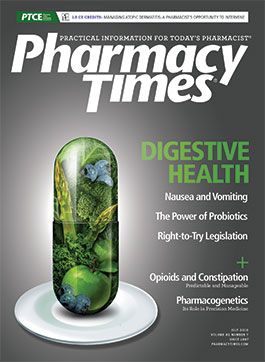Publication
Article
Pharmacy Times
Counterfeit Pharmaceutical Dangers
Author(s):
Lately, the number of counterfeit prescription drugs seems to have exploded in the United States.
Lately, the number of counterfeit prescription drugs seems to have exploded in the United States. These drugs are nothing new, but the seemingly large increase in schedule II opiate medications is new.
Many years ago, when erectile dysfunction (ED) drugs such as Viagra and Cialis hit the US market, big money was made on counterfeit versions of them, and big money was spent by legitimate manufacturers to try to stop the counterfeiting. The counterfeit drugs were typically made overseas in unsanitary conditions, and the packaging was produced in China.
The indicia on the pharmaceuticals and the packaging were extremely difficult to detect as counterfeit. I attended training with security personnel from legitimate manufacturers in which we were asked to identify counterfeit pills and packaging when they were presented next to legitimate products. The only reason we occasionally chose correctly is that we had a 50/50 chance! Counterfeit products could be identified only by laboratory analysis.
Counterfeiters chose to produce ED drugs because they were popular and expensive. Counterfeit pills cost half as much, or less, than legitimate products, which should have been a red flag to customers. Cattle dung, drywall, and other substances that should not be ingested were found in some counterfeit drugs.
The new round of counterfeit drugs is much more concerning. A few years ago, my organization seized what appeared to be OxyContin 80 mg. However, just handling the pills caused them to melt in our hands. This was about 2 years after the reformulation. The person who had the pills was in prison during the switch, but he had been released from prison and was selling his stockpile. When the pills were analyzed in a laboratory, the main ingredient was found to be acetaminophen.
More recently, heroin has been found in pills that appear to be generic oxycodone. Whoever is producing these has been busy because they seem to be the most numerous counterfeit. Some individuals who possessed the pills knew they were heroin, but other individuals thought they were oxycodone.
The deadliest counterfeit pills that seem to be gaining popularity are those laced with fentanyl, which is made primarily in clandestine labs in Mexico and, possibly, California. Seizures of these counterfeits are increasing almost weekly, with their source(s) often unknown to law enforcement.
Perhaps the scariest part of the counterfeit prescription drug issue is the possibility that legitimate patients will begin buying counterfeit drugs on the street when their prescribers cut them off due to their paranoia over the new prescribing guidelines. Does this really happen? There are scattered reports that it does.
I can imagine legitimate pain patients not knowing the ways of the street and being easily duped into buying counterfeit drugs that contain only acetaminophen or heroin and fentanyl. These patients can become desperate as they frantically search for medications that help ease their pain. I do not want to sound too alarmist regarding a problem that we do not know will be widespread, but if legitimate prescribing is affected, overdoses may become more commonplace.
I think the vast majority of the public likely does not have a clue about counterfeit prescription drugs and their negative consequences. The public should be educated on these drugs as a reminder that the safest place from which to get their medication is still their local pharmacy, not their local drug dealer.
Cmdr Burke is a 40-year veteran of law enforcement and the past president of the National Association of Drug Diversion Investigators. He can be reached by e-mail at burke@rxdiversion.com or via the website www.rxdiversion.com.







